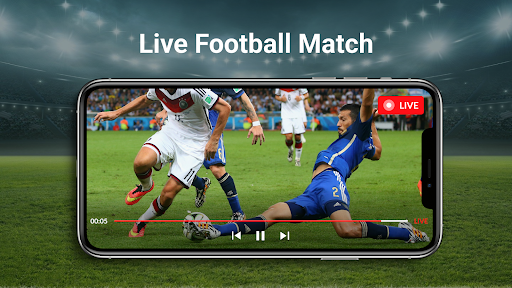1. Introduction
- The rising popularity of sports live streaming
- Overview of the article content
2. Understanding the Sports Live Streaming Market
- Market trends and statistics
- Key players in the industry
3. Essential Features of a Sports Live Streaming App
- High-quality video streaming
- Real-time analytics
- Multiple camera angles
- Interactive chat
- Social media integration
- Notifications and alerts
- Subscription and monetization options
4. Technological Requirements for Sports Live Streaming Apps
- Streaming protocols (HLS, RTMP)
- Video codecs (H.264, H.265)
- Content Delivery Networks (CDNs)
- Cloud storage and computing
- Backend infrastructure
5. Designing the User Interface (UI)
- Importance of user-friendly design
- Key UI elements for sports apps
- Designing for different devices (mobile, tablet, smart TV)
6. User Experience (UX) Best Practices
- Ensuring smooth navigation
- Optimizing load times
- Personalization features
- User engagement strategies
7. Developing the App: Step-by-Step Guide
- Planning and requirement gathering
- Choosing the right technology stack
- Building the MVP (Minimum Viable Product)
- Integrating essential features
- Testing and quality assurance
8. Live Streaming Infrastructure
- Setting up servers
- Ensuring low latency
- Managing bandwidth and scalability
9. Security Considerations
- Protecting against piracy
- Ensuring data privacy
- Implementing secure payment gateways
10. Monetization Strategies
- Subscription models
- Pay-per-view options
- In-app advertising
- Sponsorship and partnerships
11. Marketing and Promotion
- Building a pre-launch buzz
- Leveraging social media
- Influencer collaborations
- Post-launch marketing tactics
12. Legal and Regulatory Compliance
- Broadcasting rights and licenses
- Adhering to data protection laws
- Ensuring accessibility compliance
13. Case Studies of Successful Sports Live Streaming Apps
- Examples from major sports leagues
- Innovative features and strategies
14. Challenges in Sports Live Streaming App Development
- Technical challenges
- User retention issues
- Competition and market saturation
15. Future Trends in Sports Live Streaming
- The role of AI and machine learning
- VR and AR integration
- Enhanced interactivity
16. Conclusion
- Recap of key points
- Final thoughts on the potential of sports live streaming apps
17. FAQs
- How long does it take to develop a sports live streaming app?
- What are the costs involved in developing such an app?
- How can one ensure the quality of live streams?
- What are the common pitfalls to avoid in sports live streaming app development?
- How can apps stay competitive in the evolving market?
Sports live streaming has skyrocketed in popularity, transforming the way fans engage with their favorite teams and events. This guide explores the intricacies of developing a sports live streaming app, covering essential features, technological requirements, and best practices to ensure a seamless viewing experience.
Understanding the Sports Live Streaming Market
The sports live streaming market has experienced exponential growth, driven by the increasing demand for on-the-go access to live sports events. Recent statistics indicate a significant rise in user engagement, with major players like ESPN, DAZN, and NBC Sports dominating the scene. Understanding these trends and competitors is crucial for any new entrant looking to make a mark.
Essential Features of a Sports Live Streaming App
High-Quality Video Streaming
Providing high-definition streaming is paramount. Users expect clear, uninterrupted broadcasts that capture every moment of the action.
Real-Time Analytics
Integrating real-time analytics allows viewers to access live stats, scores, and player information, enhancing their viewing experience.
Multiple Camera Angles
Offering multiple camera angles provides viewers with a comprehensive perspective of the game, making the experience more immersive.

Interactive Chat
An interactive chat feature fosters a sense of community among fans, enabling them to discuss the game in real time.
Social Media Integration
Integrating social media allows users to share highlights, engage with fellow fans, and follow live updates across platforms.
Notifications and Alerts
Customizable notifications ensure that users never miss a game, score update, or important event.
Subscription and Monetization Options
Providing flexible subscription models and pay-per-view options ensures sustainable revenue generation.
Technological Requirements for Sports Live Streaming Apps
Streaming Protocols (HLS, RTMP)
Protocols like HLS (HTTP Live Streaming) and RTMP (Real-Time Messaging Protocol) are essential for delivering smooth, reliable streams.
Video Codecs (H.264, H.265)
Utilizing advanced video codecs such as H.264 and H.265 ensures efficient compression and high-quality video transmission.
Content Delivery Networks (CDNs)
CDNs distribute content globally, reducing latency and ensuring a smooth streaming experience for users regardless of their location.
Cloud Storage and Computing
Leveraging cloud services for storage and computing enhances scalability and reliability.
Backend Infrastructure
A robust backend infrastructure is critical for managing user data, handling traffic spikes, and ensuring seamless streaming.
Designing the User Interface (UI)
Importance of User-Friendly Design
A user-friendly design is essential for retaining users and ensuring a positive experience.
Key UI Elements for Sports Apps
Intuitive navigation, clear icons, and responsive design are key elements to focus on.
Designing for Different Devices
Ensuring compatibility across mobile, tablet, and smart TV devices is crucial for reaching a wider audience.
User Experience (UX) Best Practices
Ensuring Smooth Navigation
Smooth navigation helps users find content quickly and easily, enhancing their overall experience.
Optimizing Load Times
Fast load times are critical in retaining users and ensuring they don't miss any live action.
Personalization Features
Personalization features, such as tailored content recommendations, enhance user engagement.
User Engagement Strategies
Gamification, polls, and interactive features can significantly boost user engagement.
Developing the App: Step-by-Step Guide
Planning and Requirement Gathering
Start by outlining the app’s goals, features, and target audience.
Choosing the Right Technology Stack
Selecting the appropriate technologies ensures the app is scalable, secure, and efficient.
Building the MVP (Minimum Viable Product)
Develop an MVP to test core functionalities and gather user feedback.
Integrating Essential Features
Incorporate essential features such as live streaming, real-time analytics, and social media integration.
Testing and Quality Assurance
Rigorous testing ensures the app functions smoothly across different devices and conditions.
Live Streaming Infrastructure
Setting Up Servers
Reliable server setup is crucial for handling live streaming traffic.
Ensuring Low Latency
Minimizing latency ensures real-time viewing experiences.
Managing Bandwidth and Scalability
Scalable infrastructure can handle traffic surges during major events.
Security Considerations
Protecting Against Piracy
Implementing DRM (Digital Rights Management) protects content from unauthorized access.
Ensuring Data Privacy
Compliance with data protection laws ensures user data is secure.
Implementing Secure Payment Gateways

Secure payment gateways protect user transactions and data.
Monetization Strategies
Subscription Models
Offer various subscription plans to cater to different user needs.
Pay-Per-View Options
Pay-per-view options allow users to purchase access to specific events.
In-App Advertising
In-app advertising provides additional revenue streams.
Sponsorship and Partnerships
Collaborating with sponsors and partners can enhance revenue and brand visibility.
Marketing and Promotion
Building a Pre-Launch Buzz
Create anticipation through teasers, social media campaigns, and early access offers.
Leveraging Social Media
Utilize social media to reach a broader audience and engage with fans.
Influencer Collaborations
Collaborating with influencers can boost visibility and credibility.
Post-Launch Marketing Tactics
Continued marketing efforts post-launch ensure sustained user engagement and growth.
Legal and Regulatory Compliance
Broadcasting Rights and Licenses
Ensure all necessary broadcasting rights and licenses are obtained.
Adhering to Data Protection Laws
Compliance with data protection regulations is crucial for user trust and legal adherence.
Ensuring Accessibility Compliance
Make sure the app is accessible to users with disabilities.
Case Studies of Successful Sports Live Streaming Apps
Examples from Major Sports Leagues
Analyze successful apps from leagues like the NFL, NBA, and Premier League.
Innovative Features and Strategies
Highlight unique features and strategies that contributed to their success.
Challenges in Sports Live Streaming App Development
Technical Challenges
Address technical challenges such as latency, buffering, and server reliability.
User Retention Issues
Implement strategies to retain users and reduce churn rates.
Competition and Market Saturation
Differentiate the app through unique features and superior user experience.
Future Trends in Sports Live Streaming
The Role of AI and Machine Learning
AI and machine learning can enhance user personalization and content recommendations.
VR and AR Integration
Integrating VR and AR can provide immersive viewing experiences.
Enhanced Interactivity
Future apps will likely offer more interactive features, such as real-time stats and multi-angle viewing.
Conclusion
Sports live streaming apps have enormous potential to transform the way fans experience their favorite sports. By understanding
market trends, incorporating essential features, and following best practices in development, you can create a successful sports live streaming app that engages users and stands out in a competitive market.
FAQs
How long does it take to develop a sports live streaming app?
The development timeline can vary but typically ranges from 6 to 12 months, depending on the complexity and features.
What are the costs involved in developing such an app?
Costs can range from $50,000 to $500,000 or more, depending on the features, technology stack, and development team.
How can one ensure the quality of live streams?
Ensuring quality involves using reliable streaming protocols, high-quality video codecs, and a robust CDN.
What are the common pitfalls to avoid in sports live streaming app development?
Common pitfalls include poor user interface design, inadequate testing, and neglecting security and privacy concerns.
How can apps stay competitive in the evolving market?
Staying competitive involves continuous innovation, incorporating user feedback, and leveraging the latest technological advancements.





